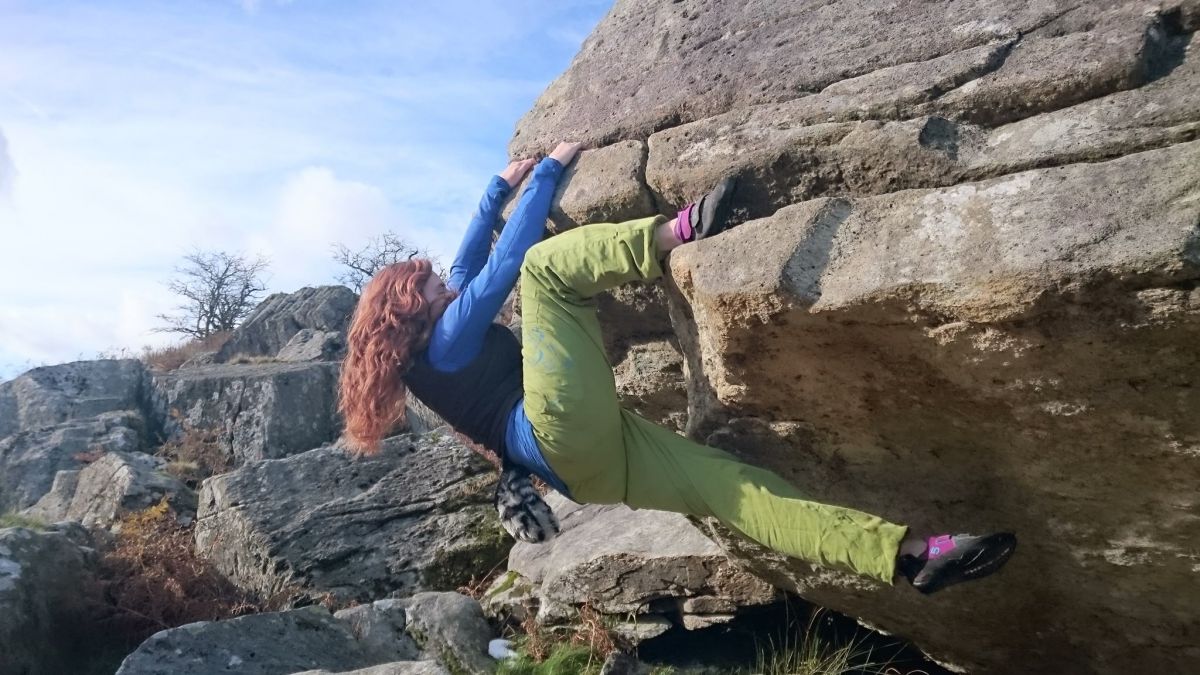
by hattenburrow | Dec 12, 2017 | Adventure, Inspiration
Georgina’s top climbing spots in the UK:
Obviously, the ‘best’ climbing is subjective. Climbing styles and abilities vary from person to person. But for those searching for some recommendations of places to check out, here are a few of my favourites from the places I have travelled over the years, with links to further information on the areas.
Indoors
- The Boardroom Climbing Centre (Cheshire).
The Boardroom is one of my favourite places to climb indoors for one very simple reason. They have a simulated 8m high Psicobloc, which turns out to be the only one in Europe, and one of only a handful in the entire world. They also have a bunch of other good bouldering, some classy route sections, a neat little training room including a lattice board and a slackline, and they serve delicious food as well, such as home-made pizzas. The prices are reasonable too!
- Awesome Walls (any of them, but my experience is based on the Sheffield centre)
Awesome Walls is a chain (I know I know, but these days it’s becoming increasingly difficult to avoid chains!) with climbing centres based in Sheffield, Stockport, Stoke, and Liverpool. They are known for their big walls and long routes (Sheffield has a 23m competition wall, overhanging by 12m), and from my experience always contain nice training areas (the one in Sheffield is a nice platform from which to view the big wall and has a few slacklines set up as well!). Awesome Walls often holds lead competitions in particular, but I have also seen Speed Climbing being practised there and the bouldering isn’t too bad either! They also do a pretty nifty loyalty card and membership is valid across their different sites.
- Ice Factor (Kinlochleven – between Ben Nevis and Glencoe)
Ice Factor brings something altogether different to this party. Not only does it consistently rank in the best climbing centres in the world, and not only are its walls some of the highest in the U.K., but as the name suggests, it holds the biggest indoor ice climbing wall in the world. Despite being a bit out in the sticks for the majority of us, the trek is definitely worth it for some quality time on the ice whilst not leaving the U.K.!
Outdoors
Wales 
I can’t recommend Wales enough for it’s incredible climbing across several different disciplines and nearly all types of rock. Multi-pitch climbs in Snowdonia such as those on Tryfan are such joys to climb. The glorious slate close to Llanberis, and the boulders around the pass. Epic trad climbs at Gogarth and of course down south in Pembroke, along with some absolute gems of all kinds in the Gower as well. Wales has a magic about it that I haven’t quite managed to find anywhere else, and the Welsh people are some of the loveliest you’ll ever meet!

North Wales
South Wales
- Bees (Lake District)
St Bees is a bit of a gem of a find, even if you’re not looking to climb. The walk-in can be a bit of an adventure in its own right, with the bouldering nestled in a sun-trap next to the sea, underneath the 100m+ cliffs of St Bees Head and the watchful eye of an old lighthouse, a couple of seals, and in the distance, the Isle of Man. The climbing here is sandstone bouldering mainly, with some sport routes that can be a bit seepy and restricted due to the nesting birds at certain times of the year, but definitely has something to suit every style, and is beautiful to look at. Instagram coming at ya.
- Torridon (Scotland)
Whilst being a bit of a trek to get to for most Brits (north-west highlands), Torridon has a brilliant number of sandstone boulders in an area of outstanding natural beauty on the coast, along with some trad climbs and if the conditions are right, even some winter climbs. Be careful with some of the grades around here though, as they can be a bit sandbagged at times, or even feel too easy!
Bouldering
Trad
Bonus Recommendations
I know I said this blog was about some of my favourite places to climb in the UK, but I couldn’t help but recommend some other places further afield (besides the obvious choices like America, Spain, Font, etc…) if you the time, money, and opportunity.
- Wadi Rum (Jordan)
 Climbing amongst the very different type of (soft) sandstone found in the deserts here is simply spectacular, and to be honest, sometimes rather scary! But it is always thrilling, beautiful, and again, there is something for everyone. The locals are incredible and happy to guide you around what is sure to be a memorable experience even if you don’t climb. However, be sure to bring your own gear and do your own organising and planning of the trip, as climbing as the western world knows it is very different to life in the small village of Rum.
Climbing amongst the very different type of (soft) sandstone found in the deserts here is simply spectacular, and to be honest, sometimes rather scary! But it is always thrilling, beautiful, and again, there is something for everyone. The locals are incredible and happy to guide you around what is sure to be a memorable experience even if you don’t climb. However, be sure to bring your own gear and do your own organising and planning of the trip, as climbing as the western world knows it is very different to life in the small village of Rum.
- Kotecnik (Slovenia)
Perhaps the most extensive climbing area in Slovenia, hidden away in the forest near Celje is one of the most incredible crags I have ever laid my eyes on. 11 sectors containing a total of 334 routes, the sport climbs here are world class and spans every style you can think of. Not too hot in the summers since the trees shade most of the sectors, the walk-in to the furthest sector only takes 35 minutes.
- Rjukan (Norway)

Rjukan is a bit of an ice climbing Mecca. Road-side cragging situated just a few hours from Oslo, it is achievable to get a few decent ascents in even if you’re only visiting for a long weekend. The Old School Hostel is a hub for visiting ice climbers and a test centre for Black Diamond, and the area as a whole is magical for beginners and advanced alike. With the Gaustatoppen Ski Resort situated a free bus ride away up one side of the valley, it is even possible to make the trip using only public transport.
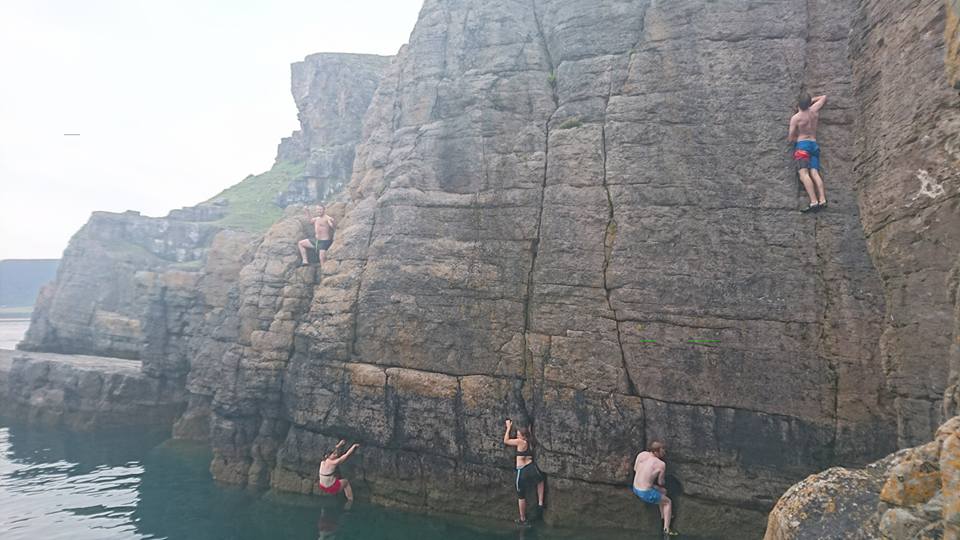
by hattenburrow | Dec 4, 2017 | Adventure, Mountains
Hi Folks! I hope you’re having an awesome run up to Christmas. As part of my guest post series I would like to introduce you to Spider women herself! Miss Georgina Jackon;
“During the weekdays I am a systems engineer for a large British aerospace company, and during the weekends I do my best to get out in my self-converted van with my partner and have fun. Whilst we mostly climb, walk, scramble, slackline and practise acroyoga in the U.K., we try to get abroad to new and exciting places as often as possible and to try different things, such as Scuba Diving in the Jordanian Red Sea in April.”
Over the next two weeks Georgina will, explain the many types of climbing and then shall her favourite spots to try this fantastic sport.
Climbing is for everyone. And it will solve pretty much all of your problems.
This is not a statement that I make lightly. I have climbed with blind people. I have climbed with those who have no lower limbs. I have climbed with toddlers, teenagers, pensioners, and everyone in between. I have climbed as part of a team and I have climbed alone. And that’s just at my local indoor wall.
Climbing is one of those special things that forces you to focus on the moment. It forces you to live right here, right now. Because if you don’t, well, you fall. And it is that very thing – falling – which will make you a better, well-rounded person in every-day life.

Falling brings people together. The climbing community is unlike anything else I have ever found in life. It is honest. It is humble. It is more supportive than you could imagine. It is diverse, it is willing to learn, and it is definitely willing to teach. The sport seems to demand it, really. I mean, the only way to learn how to climb is to do it. And by definition, learning often involves failing, which in this case involves falling off. In this way, climbing can build confidence. It builds endlessly on psychological factors in how far you can push yourself, fighting the instinctive and inherent fears involved with falling, and in building trust and good relationships in those you climb with. You would be amazed how much it builds physical strength and co-ordination, and yes, in places you wouldn’t expect!
It is not too expensive. It is not restrictive. It is beautiful, it is inclusive, and it is personal and respectful, and for a lot of people it becomes a way of life.
There are many different types of climbing – definitely enough to suit all needs and types, and each has its own quirks and nuances and differences, and each also receives the respect that it deserves from the climbing world.
Bouldering 
Bouldering is typically climbing on boulders (go figure), without any ropes. This means that often routes can be quite short, with quite powerful and/or technical moves. Bouldering has two ‘spin-off’ disciplines. One is called ‘high-balling’, which is where the boulder is particularly tall and so the route is especially long in length for a boulder, making any potential falls and landings dangerous. Particularly if bouldering outside, a ‘spotter’ will be used by the climber. A spotter is a person who stands near to the climber, prepared to support the climber if need be or push them towards a safe landing or landing position if they fall. The other spin-off of bouldering is called deep-water soloing, which is the same type of thing again, but done above deep water. This means if you fall off the climb, you fall into the water and not onto the ground (or a crash-pad!).
Sport Climbing
Sport climbing is where someone has placed protection into the rock already in the form of bolts, in a fairly even spread over the length of the route. To this end, the routes are often much longer than bouldering routes, and allow many different types and locations of rock to be accessed. The bolts are then clipped into by the lead climber using a quickdraw (a set of snap-gate carabiners joined together by a dog-bone shaped piece of tough material, usually either nylon or dyneema,). One end of the quickdraw gets clipped onto the bolt, and the other end gets clipped onto a rope attached to the climber’s harness. A belayer at the base of the climb will then use a belay device attached to their own harness to protect the leader if they fall, and to lower the leader after they have completed the climb. This is a device which can use frictional forces in order to stop the rope from moving, and thus ‘catch’ a fall.
 Trad Climbing
Trad Climbing
Trad (traditional) climbing is where there is no pre-placed protection in the rock. All protection is placed by the lead climber as they climb the route. This involves placing different sizes and shapes of bits of metal (called nuts or hexes depending on the shape, and cams which have a movable head that gets placed in the rock), and sometimes slings (a loop of tough material, either nylon or dyneema). Once the climber has finished climbing the route, their belayer normally ‘seconds’ the route, removing all of the gear placed by the leader as they go, and being belayed from the top of the route by the lead climber.
Alpine and Winter Climbing
Alpine climbing is an art form which can see people spend many nights on a mountain, and sometimes weeks on a single wall or cliff-face alone (a form of this can be seen in ‘Big-wall climbing, such as climbing El Capitan in America). It can often involve ice climbing, where ice screws are wound into the ice to provide some protection for the climber, who uses ice axes and crampons (spikes for mountain boots) to bite into the ice and hold the climb up. It also often involves crossing glaciers, crevasses, and snow fields, and sometimes aid climbing, which is where the route is not climbed using hand and foot placements, but climbed by ascending the rope as such, instead of the rock. If you are not aid climbing, you are seen to be ‘free-climbing’.

Outdoor climbing is obviously based around the naturally formed rock, so you do not have a choice or say in what the route is like. However, indoor walls can be made to various shapes and sizes, and holds (often made by moulding resin and plastic, but also sometimes wooden) can be multiple sizes, shapes and colours, and placed in any arrangement you can think of. ‘Pulling on plastic’ is very different to being on real rock as outdoor climbing is much more three-dimensional than indoor climbing, and more open to accommodating different climbing styles since it is not as obvious where holds are, and of course, you can’t really climb outside in the rain. There are many different types of rock, and many different types of routes, so be sure to try different types of rock at different crags and in different styles (this goes for indoor climbing, as well!). For example, an overhanging juggy route may be just up your street, but your local crag is slabby slate which is tiny finger crimps, and this can put off those just starting out.
Sport climbing (both leading and top/bottom-roping) and bouldering (sometimes simulated deep-water solos, either over a pool or over a foam pit) are the most typical types of climbing available at indoor walls. Some walls can provide indoor, artificial ice walls for ice climbing, or even walls for dry-tooling. This is where climbing axes are used not on ice, but on rock, and can lead into mixed climbing (a route which has a mixture of rock and ice on it). If indoors, normally wooden holds and features are used for axes (no crampons), or wooden axe handles with material loops on the ends of them get hooked over indoor climbing holds to simulate an axe placement.
With indoor climbing, a route is seen to be completed if you place both hands (in a controlled manner) on the highest hold of that route, without falling off and only using the intended climbing holds for that route (i.e. only use one colour of hold within a certain area on the wall). If you can do it first time, it is called a ‘flash’ in bouldering, and an ‘on-sight’ in sport and trad climbing. If it takes you a couple of goes, it is a redpoint, and more than that makes it a project. Projects aren’t often possible with indoor climbing as the routes will be reset frequently and so your project will no longer exist!
In the U.K., almost every indoor centre will let you start bouldering with no prior knowledge or experience, and most will hire out specific climbing shoes as well. These help to bind your toes together so that you can place more weight and pressure on certain parts of your feet, and also provide better grip because of the rubber soles. It is widely accepted that helmets aren’t required for most indoor climbing – in fact, they can make it more dangerous than without, as they can catch on holds, so don’t worry too much about wearing one. If you want to learn how to belay and use ropes however, climbing centres will not allow you to do so without a test. This can include pictures or statements where you must be able to explain what is incorrect in the scenario, and displaying that you can successfully tie the correct knot for attaching the rope to your harness. If you have climber friends, they will often be allowed to supervise a couple of people at a time whilst using ropes and harnesses, so I would suggest getting them to teach you some things if you wish to take up route climbing. Otherwise, most centres will provide ‘Learn to Climb’ courses which will teach you the basics of climbing and safety whilst climbing indoors, but these can be expensive. If you want to learn and improve technique quickly however, focus on bouldering. If you are interested in gear, strike up a conversation with any of the staff at your local wall, or simply search online. There are many climbing community forums, sites and pages, such as UKC, BMC, and Climbing!
The first few times you start climbing, the place you will feel it most in your body is your forearms. This will decrease over time and you’ll find quite quickly that gains are made – you can start staying on the wall for longer periods of time and being able to grip and hold onto different things. So stick with it and don’t be put off too quickly! The community will quickly welcome you in and for most of us, it becomes a way of life. Climbing is an easy way to build strength, balance, co-ordination, confidence, and communication. Really, the only way to get better at climbing is to climb, so get out there and have fun! It might just change your world.
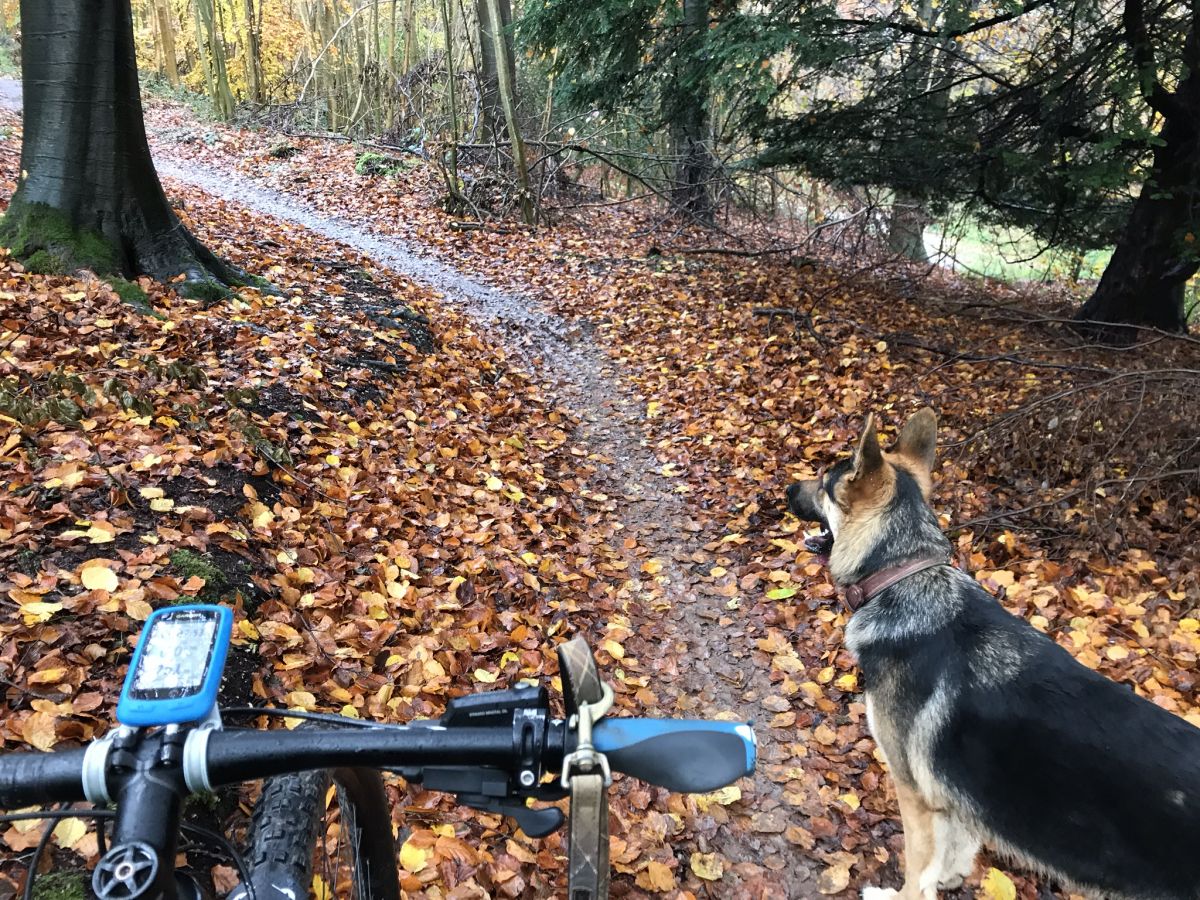
by hattenburrow | Nov 28, 2017 | Adventure, Biking Adventures, How to
Winter riding doesn’t have to be a frosty affair it can be good fun and very beautiful especially if you are prepared.
“If you fail to prepare, you prepare to fail”
My advice would be look at what rides / training you want / need to do then head to trusty (or not so) BBC weather forecast and look at the week ahead this will help you plan longer rides on days when the weather is better and shorter sessions in the rain.

One thing to mention on this is that if you’re doing sprints, wet / icy weather and slippery roads are not a good combo so be ready to change your session accordingly if you can be flexible in your training around the weather and expect that, it will rain, you will get wet and it may be cold for the first 5 minutes until you warm up then riding will be enjoyable.
It is true what they say there is never the wrong weather just the wrong gear.
My top kit list would be:
- Grip Grab overshoes – warm and dry feet make riding in wet and cold weather so much more comfortable. Make sure you buy a size that hugs your shoes I recommend The Hammerhead, it is a warm and waterproof coated neoprene winter shoe cover. Designed and tested to keep your feet warm and dry in wet and cold weather conditions.
- Altura Night Vision Evo jacket this versatile jacket is labelled for ‘commuting’ however I love mine for every occasion it’s great for training the big vents on the sides give adequate breathability whilst knowing I have the waterproof and high visibility factors Altura say: The Night Vision Evo features lightweight, waterproof, windproof and breathable fabrics in a soft touch 2 Layer Altura Shield™ EVO fabric, which help to keep you both dry and warm on your rides. You then have the benefit of critically positioned reflective details and an ingenious integrated i-Lume™ rear flashing light to ensure you are easily seen. With the addition of NV360° performance you have 360 degrees of reflectivity for maximum after dark visibility from all angles.
- The cloudburst glove from Grip Grab is waterproof and windproof glove, like slipping your hands into hot water bottle covers whilst you ride with a soft fleece lining. The OutDry® Waterproof and Breathable membrane makes the Cloudburst gloves that will serve you well as an all-round high-end glove.

Riding through winter tips:
- Early mornings are stunning wake up and get out before the sun rises and watch it come up also a bonus around Christmas is seeing everyone’s Christmas lights!
- Put a little warm water in your bottles if riding in freezing conditions to stop it freezing.
- Get your kit on the radiator ready to go!
- Check your tyre pressure riding in a lot of mud – decrease the air in your tyres to help with grip
- Get a good pair of lights, ideally helmet and handle bar Exposure lights are fantastic but pricey for a cheaper option search amazing from 1000 lumen lights
- Invest in thermal underwear and a good rain / windproof
- Let people know where you’re going and how long you will be out

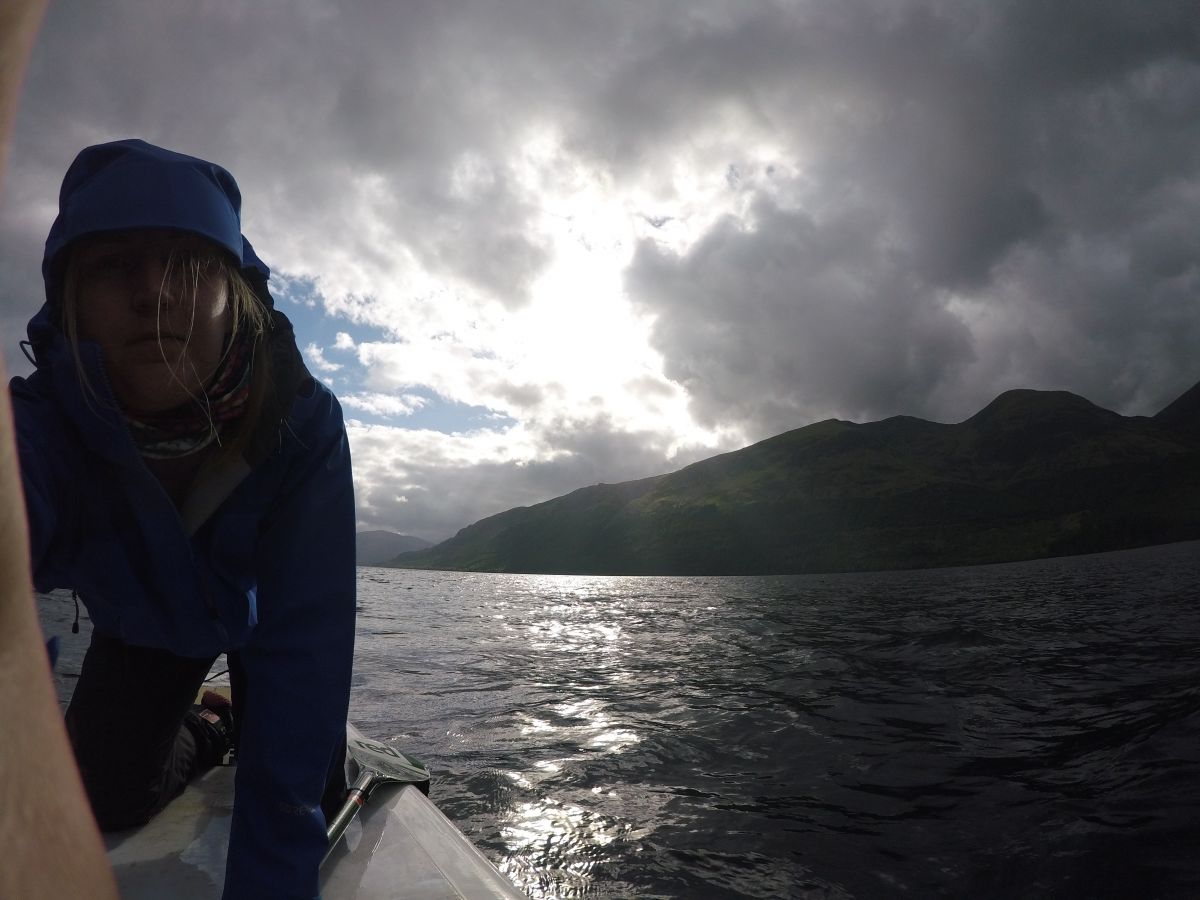
by hattenburrow | Nov 15, 2017 | Adventure, How to
[fusion_builder_container hundred_percent=”no” equal_height_columns=”no” menu_anchor=”” hide_on_mobile=”small-visibility,medium-visibility,large-visibility” class=”” id=”” background_color=”” background_image=”” background_position=”center center” background_repeat=”no-repeat” fade=”no” background_parallax=”none” enable_mobile=”no” parallax_speed=”0.3″ video_mp4=”” video_webm=”” video_ogv=”” video_url=”” video_aspect_ratio=”16:9″ video_loop=”yes” video_mute=”yes” video_preview_image=”” border_size=”” border_color=”” border_style=”solid” margin_top=”” margin_bottom=”” padding_top=”” padding_right=”” padding_bottom=”” padding_left=””][fusion_builder_row][fusion_builder_column type=”1_1″ layout=”1_1″ spacing=”” center_content=”no” hover_type=”none” link=”” min_height=”” hide_on_mobile=”small-visibility,medium-visibility,large-visibility” class=”” id=”” background_color=”” background_image=”” background_position=”left top” background_repeat=”no-repeat” border_size=”0″ border_color=”” border_style=”solid” border_position=”all” padding=”” dimension_margin=”” animation_type=”” animation_direction=”left” animation_speed=”0.3″ animation_offset=”” last=”no”][fusion_text]
Hi folks! Here is the second in my guest blog series from Helen Read.
Helen was always really active as a youngster, getting involved in anything and everything she could, but lost the outdoors in her 20s. When going through a period of anxiety and depression, her friends persuaded her to train for and attempt to hike the Welsh 3000 that reinvigorated her love for the mountains and fresh air.
Ever since she has been on a quest to live the adventurous life that she is truly passionate about and helps her regulate the stresses of daily life. Whenever she has the opportunity she will be up a hill (or possibly under one) or on the water generally avoiding cities. One downside of liking so many different adventure sports is that it takes a very long time to improve ability, so she is currently planning a year away from work living the van life round Europe in order to focus more time on each one.
Go Helen!
[/fusion_text][fusion_text]
I woke up in my camper-van to a misty morning at the foot of Ben Nevis. It was the second week of my adventures in Scotland and I was feeling the difference between my normal office days and daily mountainous excursions that I’d had for the last 10 days.
By the time I persuaded myself to get up it was 10 and after stocking up on food for the coming trip I eventually found myself at the top of Neptune’s Staircase by lunchtime and the start of my adventure.
It was a strange feeling paddling away from my van and into the unknown, About 20 minutes in and Scotland did what Scotland does best as it started raining, luckily I was already togged up in my wetsuit (overkill) and waterproofs (entirely necessary) and it was a canal stretch so the water was calm, making negotiating the scout group not too troublesome.
Happy despite the rain
My first lock didn’t go entirely to plan. The first pair was inexplicably open so I paddled through, hoping there would be a landing stage in the middle that could hop out at so I’d only have to portage the last bit, but unfortunately not, so I had to paddle back out and walk around.
This was my first attempt at portaging and was not my most graceful. As it was such a long way I wanted to do it in one, so I put all my baggage in the paddle board bag (which luckily has wheels) with the paddle sticking out of the top, and the paddleboard in the other hand waddling up the tow-path, having to stop every 15m or so because my hand hurt. 20kg of board is quite a lot on one tiny handle! For future locks it wasn’t quite so far so I tended to do 2 trips, except for when the lovely lock-keeper at Loch Lochy insisted on giving me a hand.
It wasn’t long into my paddle that I realised I had forgotten to bring the little map that I had been given when I picked up a key for the lock facilities. So at that lock, I thought I’d carry on, still feeling pretty fresh at 4.30 because I started so late. That was a mistake.
Leaving Gairlochy
As I rounded the bend, heading east from Gairlochy lock, I discovered I had just set out on a loch. It wasn’t long before the exposure had let the wind pick up the water into little waves that made balancing extremely tricky and led me to resort to kneeling. I intended to follow the navigation buoys effectively through the middle of the loch, but not far into my voyage the topography to the west meant the wind began funnelling and it wasn’t long before I had been blown across to the east shore.
The waves seemed to be bigger the further down the lock I got and to keep direction I was paddling 3:1 on the right. Not wanting to fall in on day one I did my best not to end up side on into the waves.
Kneeling meant that all my balance and suspension was being done by my lower back, by the evening I was beginning to get back spasms and was in a lot of pain. I did find a couple of beaches that seemed to belong to hotels and in one instance wandered up to ask if there were any rooms because all I could dream about was a cosy bed, but I was out of luck.
Pretty sky, pain face
Meanwhile, there was a stunning sunset going on and I was torn between wanting the pain to stop and being so happy and grateful for being there at that moment to see it. I know it’s a view I could have gotten from a layby on the adjacent road, but feeling so isolated as the only person on an unpowered vessel in that whole loch just made it feel magic.
That solitude also let me give myself permission to cry, yelp and moo (don’t know why) every time my back seized up and there were points where I tried to stretch it out but got a wave to the face, so had to reserve that mostly for beaches.
The moment I first caught sight of the next lock was joyous though as it signalled the return to canals and I got an amazing night’s sleep even in my horrible little coffin tent.
Laggan Locks
The next day was completely different. The canal passed through woodland and had a Scandinavian feel about it. By lunchtime the cloud had burnt off and it was a lovely sunny day. At this point I wished I hadn’t got a wetsuit on as I was getting pretty toasty, but I hadn’t really bought any alternative clothes that I was willing to get wet- preferring to save my PJ’s for night time. On the plus side I didn’t get sunburn either!
Read about the rest of Helen’s trip on Trek and Trade Winds.
Top tips for getting started paddleboading:
1. Give it a go, most kayak places near still water now also hire out paddleboards so you can get a taster or whether it is for you.
2. Build up your confidence, there are sessions and lessons you can go to to improve your technique and make other paddling friends
3. Board selection: my board is inflatable so I can get it in my flat and big enough to hold 2 people so I wasn’t worried about bag weight; but there are some boards designed for surfing and other ways of riding. Decide how you want to ride (maybe do a taster of each type) and ask advice from the other people on the set up which will work for you.
4. Get out there! Stay safe and consider how the weather will effect you. Wind is hard to paddle against because your body acts like a sail and it picks up waves.
[/fusion_text][fusion_images picture_size=”fixed” hover_type=”none” autoplay=”no” columns=”5″ column_spacing=”13″ scroll_items=”” show_nav=”yes” mouse_scroll=”no” border=”yes” lightbox=”no” hide_on_mobile=”small-visibility,medium-visibility,large-visibility” class=”” id=””][fusion_image image=”http://lvv.a25.mytemp.website/wp-content/uploads/2017/11/G0061023-300×225.jpg” image_id=”3556″ link=”” linktarget=”_self” alt=”” /][fusion_image image=”http://lvv.a25.mytemp.website/wp-content/uploads/2017/11/G0071048-300×225.jpg” image_id=”3555″ link=”” linktarget=”_self” alt=”” /][fusion_image image=”http://lvv.a25.mytemp.website/wp-content/uploads/2017/11/20170530_210728-300×169.jpg” image_id=”3554″ link=”” linktarget=”_self” alt=”” /][fusion_image image=”http://lvv.a25.mytemp.website/wp-content/uploads/2017/11/IMG_20170602_103958304_HDR-169×300.jpg” image_id=”3553″ link=”” linktarget=”_self” alt=”” /][/fusion_images][/fusion_builder_column][/fusion_builder_row][/fusion_builder_container]
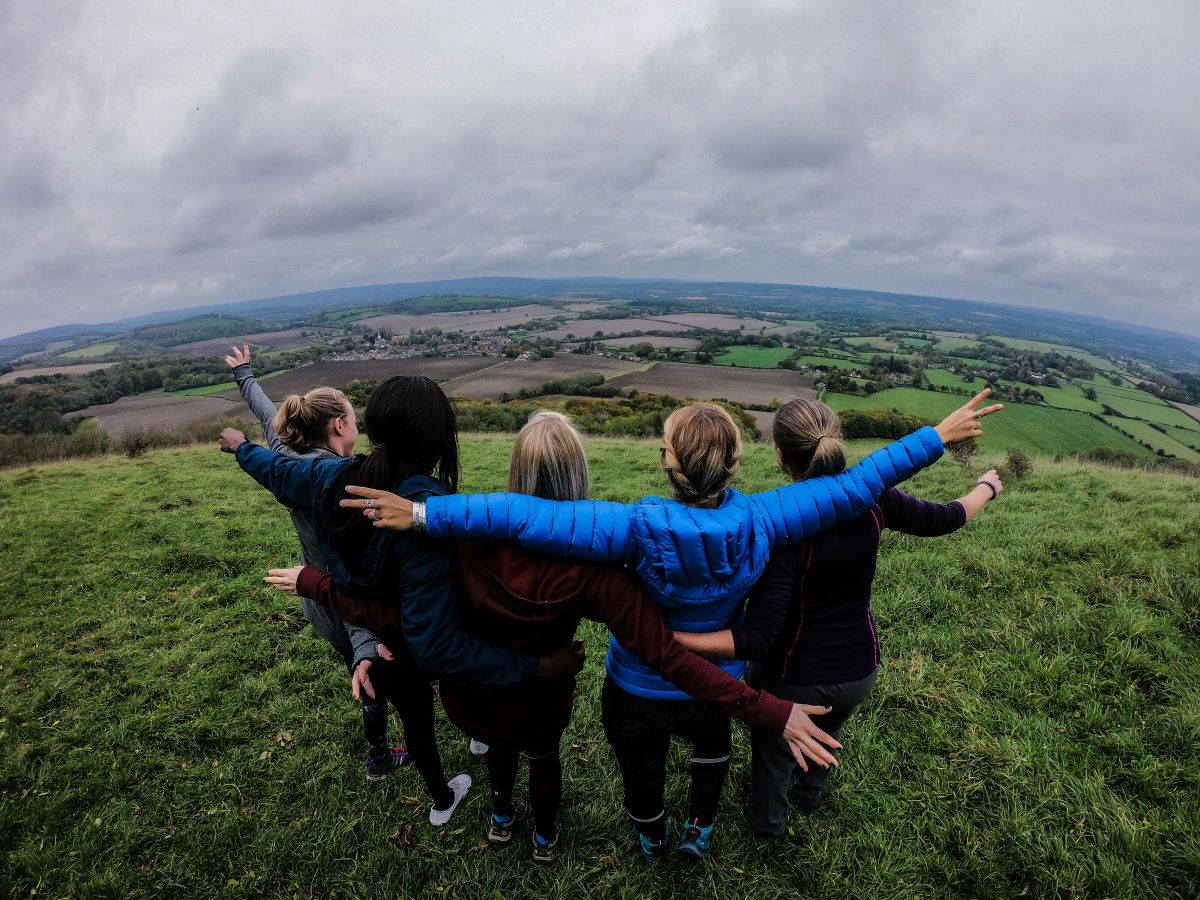
by hattenburrow | Nov 11, 2017 | Adventure, Inspiration, Uncategorized
[fusion_builder_container hundred_percent=”no” equal_height_columns=”no” menu_anchor=”” hide_on_mobile=”small-visibility,medium-visibility,large-visibility” class=”” id=”” background_color=”” background_image=”” background_position=”center center” background_repeat=”no-repeat” fade=”no” background_parallax=”none” enable_mobile=”no” parallax_speed=”0.3″ video_mp4=”” video_webm=”” video_ogv=”” video_url=”” video_aspect_ratio=”16:9″ video_loop=”yes” video_mute=”yes” video_preview_image=”” border_size=”” border_color=”” border_style=”solid” margin_top=”” margin_bottom=”” padding_top=”” padding_right=”” padding_bottom=”” padding_left=””][fusion_builder_row][fusion_builder_column type=”1_1″ layout=”1_1″ spacing=”” center_content=”no” hover_type=”none” link=”” min_height=”” hide_on_mobile=”small-visibility,medium-visibility,large-visibility” class=”” id=”” background_color=”” background_image=”” background_position=”left top” background_repeat=”no-repeat” border_size=”0″ border_color=”” border_style=”solid” border_position=”all” padding=”” dimension_margin=”” animation_type=”” animation_direction=”left” animation_speed=”0.3″ animation_offset=”” last=”no”][fusion_text]
What are your dreams made of?
Next week I reach the ripe old age of 30! This is a super scary thought for me, I don’t know if anyone else feels the same but in my head I had this elaborate portrait of what being 30 would look like. I would have a lovely house, husband, dog and maybe kids with a great high flying job in marketing probably in London. Well I guess I am almost there I have an incredibly supportive boyfriend, a slightly mischievous dog and a lovely house a.k.a building site because buying a house in southern England is like selling your soul to the mortgage company.
Just writing this has actually made me feel better about myself, It’s often the case that we take for granted what we have. Especially in todays ‘social’ world where every image on Instagram shows just a tiny slice of other people’s worlds, and usually it’s the good stuff you see!
I have taken the time recently to take stock of all the amazing memories, people and achievements in my life that make me grateful each day to be who I am. I am however, a great believer in always pushing forward and have goals and aspirations, dreams that I want to reach.
I have not had a ‘normal’ career path but I have certainly learnt who I am along the way. Starting with a degree in fashion, I still remember my interview and convincing my Dad that the black suit dress was not the best option and instead opting for a far zingier outfit. They must have liked it because the next thing I knew I was starting Uni in Southampton and couldn’t of been happier. Southampton was brilliant I have awesome memories learnt a hell of a lot about life, love, friendship and fashion of course! I also learnt that the fashion industry was not for me. After three years working hard on my degree I found myself back at home feeling rather delated and not sure what to do next. Not to be knocked down by the first hurdle I decided these feelings were normal and that’s feeling down was not constructive. After some soul searching I found my way back to my comfort zone of the class room and started my Masters in Marketing Management at the same time as being an intern for the university. This was a fantastic opportunity to keep learning (pushed way outside my comfort zone) and earn money. Win win.
[/fusion_text][fusion_imageframe image_id=”3547″ style_type=”none” stylecolor=”” hover_type=”none” bordersize=”” bordercolor=”” borderradius=”” align=”none” lightbox=”no” gallery_id=”” lightbox_image=”” alt=”” link=”” linktarget=”_self” hide_on_mobile=”small-visibility,medium-visibility,large-visibility” class=”” id=”” animation_type=”” animation_direction=”left” animation_speed=”0.3″ animation_offset=””]http://lvv.a25.mytemp.website/wp-content/uploads/2017/11/34965_10150216486270405_3491566_n-300×225.jpg[/fusion_imageframe][fusion_text]
This time I left Uni with a direction and a drive to earn money! This drive landed me in a job in telecoms…. Que feeling totally confused and disinterested in trying to sell Voipe (I still don’t know what this is 7 years later). This first taste of employment taught me to search deeper and that money was not the bee all and end all.
Some would say ‘fate’ created an avenue to pursue my own path for a few months whilst I recovered from a back injury. This was my first taste of working for myself and I lapped it up. The thing I loved about working for myself was problem solving for clients. Whilst I had been an intern the Director of Marketing, who I reported too, was far too busy to give me things to do so I went off round the university and found ways I could improve the business services by listening to my colleagues and trying to solve their problems. I loved the creative freedom of thinking on my feet.
After my back injury Pilates was my way back to health, as well as biking this is where my hunger for living a healthy balanced lifestyle grew. I had always loved being outdoors but now being outside was an escape it allowed me to release tension and feel alive again. I spent so much time walking the country lanes with my Mum whilst I recovered, I loved the silence and peace I found in walking. My passion for biking was re-ignited when I could go further and needed a non-load bearing exercise.
After a while of working for myself again came the drive to earn money, also the drive to be closer to Martyn, living at home in Suffolk with a boyfriend on the Isle of Wight was not ideal!
So I returned to Southampton and my first taste of the real marketing world working in an agency. I enjoyed this new challenge in a fast paced industry where every 15 minutes counted towards a client’s bill. An opportunity came my way to combine my passion for health and fitness with my career in marketing and I was soon re-locating to Surrey. Surrey Sports Park the most beautiful gym I had ever set foot in! I had great fun at SSP working with the sports performance and fitness teams in the marketing department I also love being able to train at lunch and have free membership to this fabulous facility!
[/fusion_text][fusion_imageframe image_id=”3548″ style_type=”none” stylecolor=”” hover_type=”none” bordersize=”” bordercolor=”” borderradius=”” align=”none” lightbox=”no” gallery_id=”” lightbox_image=”” alt=”” link=”” linktarget=”_self” hide_on_mobile=”small-visibility,medium-visibility,large-visibility” class=”” id=”” animation_type=”” animation_direction=”left” animation_speed=”0.3″ animation_offset=””]http://lvv.a25.mytemp.website/wp-content/uploads/2017/11/1011979_10152993766030405_1889047284_n-200×300.jpg[/fusion_imageframe][fusion_imageframe image_id=”3549″ style_type=”none” stylecolor=”” hover_type=”none” bordersize=”” bordercolor=”” borderradius=”” align=”none” lightbox=”no” gallery_id=”” lightbox_image=”” alt=”” link=”” linktarget=”_self” hide_on_mobile=”small-visibility,medium-visibility,large-visibility” class=”” id=”” animation_type=”” animation_direction=”left” animation_speed=”0.3″ animation_offset=””]http://lvv.a25.mytemp.website/wp-content/uploads/2017/11/IMG_1532-300×225.jpg[/fusion_imageframe][fusion_text]
This was also where my coaching journey began and I did my cycle coaching award and then coached at the Sports Park. I enjoyed my job but the 45 min commute was meaning I couldn’t coach or train as hard as I wanted to and my passion for cycling had grown to racing and after working my way into elite level at cross-country I wanted to dedicate more time to my sport.
Moving to Dreams Come True was great I had a brilliant boss who was very flexible and working for a small charity felt homely and fitted well with my values.
Working at Dreams, where we help young people with serious illness achieve their dreams has made me think about my dreams and goals. As a coach, it is so rewarding watching kids and adults work on a bike skill and then by the end of the session leave with confidence and more ability than when they started. Some of the kids I coach have been coming for four years and it’s the best ever feeling looking at where they were and were they could potentially go as gifted young riders. One of my life goals is to never stop learning and with this in mind I decided to take the plunge and learn how to be a Pilates instructor. I have seen first-hand the benefits Pilates has given me. My goal for 2018 is to combine my cycle coaching with Pilates and offer wellbeing programs for women and girls where I can show the benefits of leading healthy lifestyle through cycling, getting outdoors and maintaining a good strong core and working on posture and alignment.
It seems scary writing this down because it makes it so real. This is my goal and I am on a journey to change my view point in life. As my Dad would say ‘happy are those who dream dreams and are prepared to pay the price to see them come true.
I’d love to hear some of your life goals and how you are going to make them happen so please get in touch.
[/fusion_text][fusion_imageframe image_id=”3493″ style_type=”none” stylecolor=”” hover_type=”none” bordersize=”” bordercolor=”” borderradius=”” align=”none” lightbox=”no” gallery_id=”” lightbox_image=”” alt=”” link=”” linktarget=”_self” hide_on_mobile=”small-visibility,medium-visibility,large-visibility” class=”” id=”” animation_type=”” animation_direction=”left” animation_speed=”0.3″ animation_offset=””]http://lvv.a25.mytemp.website/wp-content/uploads/2017/10/web-banner-austria-1-300×86.jpg[/fusion_imageframe][/fusion_builder_column][/fusion_builder_row][/fusion_builder_container]
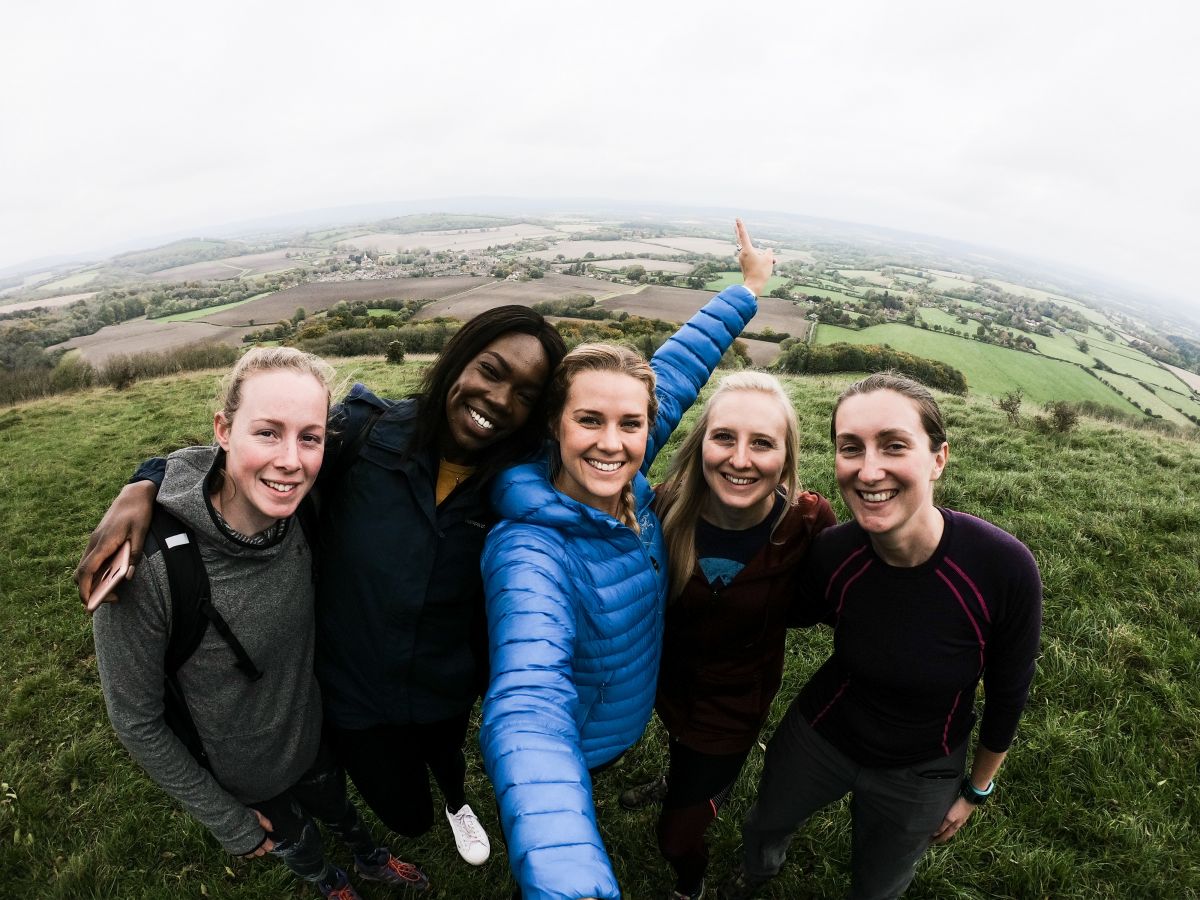
by hattenburrow | Oct 21, 2017 | Adventure
[fusion_builder_container hundred_percent=”no” equal_height_columns=”no” menu_anchor=”” hide_on_mobile=”small-visibility,medium-visibility,large-visibility” class=”” id=”” background_color=”” background_image=”” background_position=”center center” background_repeat=”no-repeat” fade=”no” background_parallax=”none” enable_mobile=”no” parallax_speed=”0.3″ video_mp4=”” video_webm=”” video_ogv=”” video_url=”” video_aspect_ratio=”16:9″ video_loop=”yes” video_mute=”yes” video_preview_image=”” border_size=”” border_color=”” border_style=”solid” margin_top=”” margin_bottom=”” padding_top=”” padding_right=”” padding_bottom=”” padding_left=””][fusion_builder_row][fusion_builder_column type=”1_1″ spacing=”” center_content=”no” hover_type=”none” link=”” min_height=”” hide_on_mobile=”small-visibility,medium-visibility,large-visibility” class=”” id=”” background_color=”” background_image=”” background_position=”left top” background_repeat=”no-repeat” border_size=”0″ border_color=”” border_style=”solid” border_position=”all” padding=”” dimension_margin=”undefined” animation_type=”” animation_direction=”left” animation_speed=”0.3″ animation_offset=”” last=”no”][fusion_text]
Autumn is one of my favourite times of year. The leaves are slowly changing, flushing with reds and oranges before making the leap to the forest floor. Each time I go out walking with Luna the landscape has changed. The forest becomes lighter as the leaves fall and reveal the cloudy sky above. The conifers stand smug keeping their needles and lush colour whilst the trees stand exposed to the elements.
Last weekend I had the privilege of spending a day outdoors with some fantastic people. Whole Earth Foods and Sophie Radcliffe invited me on an adventure along the South Downs. Starting at Harting Down we walked along a section of the South Downs way, before heading to the magical Adhurst Yurts where we went exploring the vast forest full of different types of trees some with and some without their leaves. It was like stepping into a fairy tale as we collected firewood from the dense forest ready to build our camp fire.
As Jayne and I built the fire Sophie, Katie and Chep cooked in a Safari kitchen outdoors. Dinner was served as the sun disappeared from view a heart and soul warming bowl of butternut squash and chick pea curry with a special dash of peanut butter, you must try it!
A camp fire would not be complete without marshmallows and we were in for a treat as Sophie shared her favourite camping snack of sliced apple and peanut butter s’mores it was like a sticky warming hug with a zing of fresh apple and lashings of peanut butter, what a great way to end the day, it had been an awesome adventure in the woods.
Here are a few photos from the trip.
Thank you Whole Earth and Sophie for inviting me.
[/fusion_text][fusion_images picture_size=”auto” hover_type=”zoomin” autoplay=”yes” columns=”1″ column_spacing=”13″ scroll_items=”” show_nav=”yes” mouse_scroll=”no” border=”yes” lightbox=”no” hide_on_mobile=”small-visibility,medium-visibility,large-visibility” class=”” id=””][fusion_image image=”http://lvv.a25.mytemp.website/wp-content/uploads/2017/10/IMG_5565-e1508615600973-225×300.jpg” image_id=”” link=”” linktarget=”_self” alt=”” /][fusion_image image=”http://lvv.a25.mytemp.website/wp-content/uploads/2017/10/IMG_7886-1-300×225.jpg” image_id=”” link=”” linktarget=”_self” alt=”” /][fusion_image image=”http://lvv.a25.mytemp.website/wp-content/uploads/2017/10/IMG_5555-1-300×129.jpg” image_id=”” link=”” linktarget=”_self” alt=”” /][fusion_image image=”http://lvv.a25.mytemp.website/wp-content/uploads/2017/10/IMG_5557-1-300×226.jpg” image_id=”” link=”” linktarget=”_self” alt=”” /][fusion_image image=”http://lvv.a25.mytemp.website/wp-content/uploads/2017/10/IMG_5580-300×225.jpg” image_id=”” link=”” linktarget=”_self” alt=”” /][fusion_image image=”http://lvv.a25.mytemp.website/wp-content/uploads/2017/10/IMG_5562-226×300.jpg” image_id=”” link=”” linktarget=”_self” alt=”” /][fusion_image image=”http://lvv.a25.mytemp.website/wp-content/uploads/2017/10/IMG_5577-1-225×300.jpg” image_id=”” link=”” linktarget=”_self” alt=”” /][fusion_image image=”http://lvv.a25.mytemp.website/wp-content/uploads/2017/10/IMG_5569-300×225.jpg” image_id=”” link=”” linktarget=”_self” alt=”” /][fusion_image image=”http://lvv.a25.mytemp.website/wp-content/uploads/2017/10/IMG_5568-225×300.jpg” image_id=”” link=”” linktarget=”_self” alt=”” /][fusion_image image=”http://lvv.a25.mytemp.website/wp-content/uploads/2017/10/IMG_5567-225×300.jpg” image_id=”” link=”” linktarget=”_self” alt=”” /][fusion_image image=”http://lvv.a25.mytemp.website/wp-content/uploads/2017/10/IMG_5565-e1508615600973-225×300.jpg” image_id=”” link=”” linktarget=”_self” alt=”” /][fusion_image image=”http://lvv.a25.mytemp.website/wp-content/uploads/2017/10/IMG_5579-1-225×300.jpg” image_id=”” link=”” linktarget=”_self” alt=”” /][fusion_image image=”http://lvv.a25.mytemp.website/wp-content/uploads/2017/10/IMG_5571-1-300×169.jpg” image_id=”” link=”” linktarget=”_self” alt=”” /][fusion_image image=”http://lvv.a25.mytemp.website/wp-content/uploads/2017/10/IMG_5578-1-169×300.jpg” image_id=”” link=”” linktarget=”_self” alt=”” /][fusion_image image=”http://lvv.a25.mytemp.website/wp-content/uploads/2017/10/IMG_5406-300×225.jpg” image_id=”” link=”” linktarget=”_self” alt=”” /][fusion_image image=”http://lvv.a25.mytemp.website/wp-content/uploads/2017/10/IMG_5417-300×225.jpg” image_id=”” link=”” linktarget=”_self” alt=”” /][/fusion_images][/fusion_builder_column][/fusion_builder_row][/fusion_builder_container]



 Climbing amongst the very different type of (soft) sandstone found in the deserts here is simply spectacular, and to be honest, sometimes rather scary! But it is always thrilling, beautiful, and again, there is something for everyone. The locals are incredible and happy to guide you around what is sure to be a memorable experience even if you don’t climb. However, be sure to bring your own gear and do your own organising and planning of the trip, as climbing as the western world knows it is very different to life in the small village of Rum.
Climbing amongst the very different type of (soft) sandstone found in the deserts here is simply spectacular, and to be honest, sometimes rather scary! But it is always thrilling, beautiful, and again, there is something for everyone. The locals are incredible and happy to guide you around what is sure to be a memorable experience even if you don’t climb. However, be sure to bring your own gear and do your own organising and planning of the trip, as climbing as the western world knows it is very different to life in the small village of Rum.
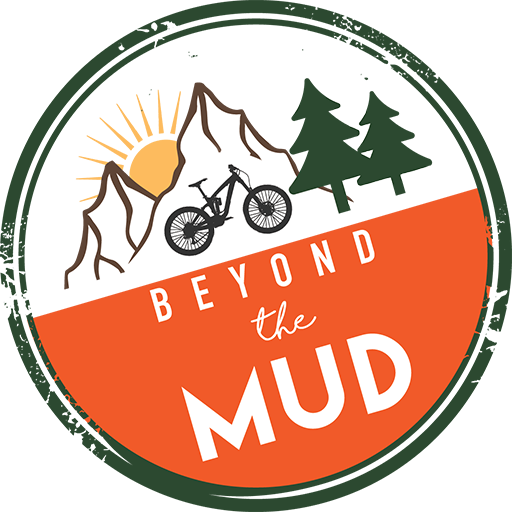



 Trad Climbing
Trad Climbing






